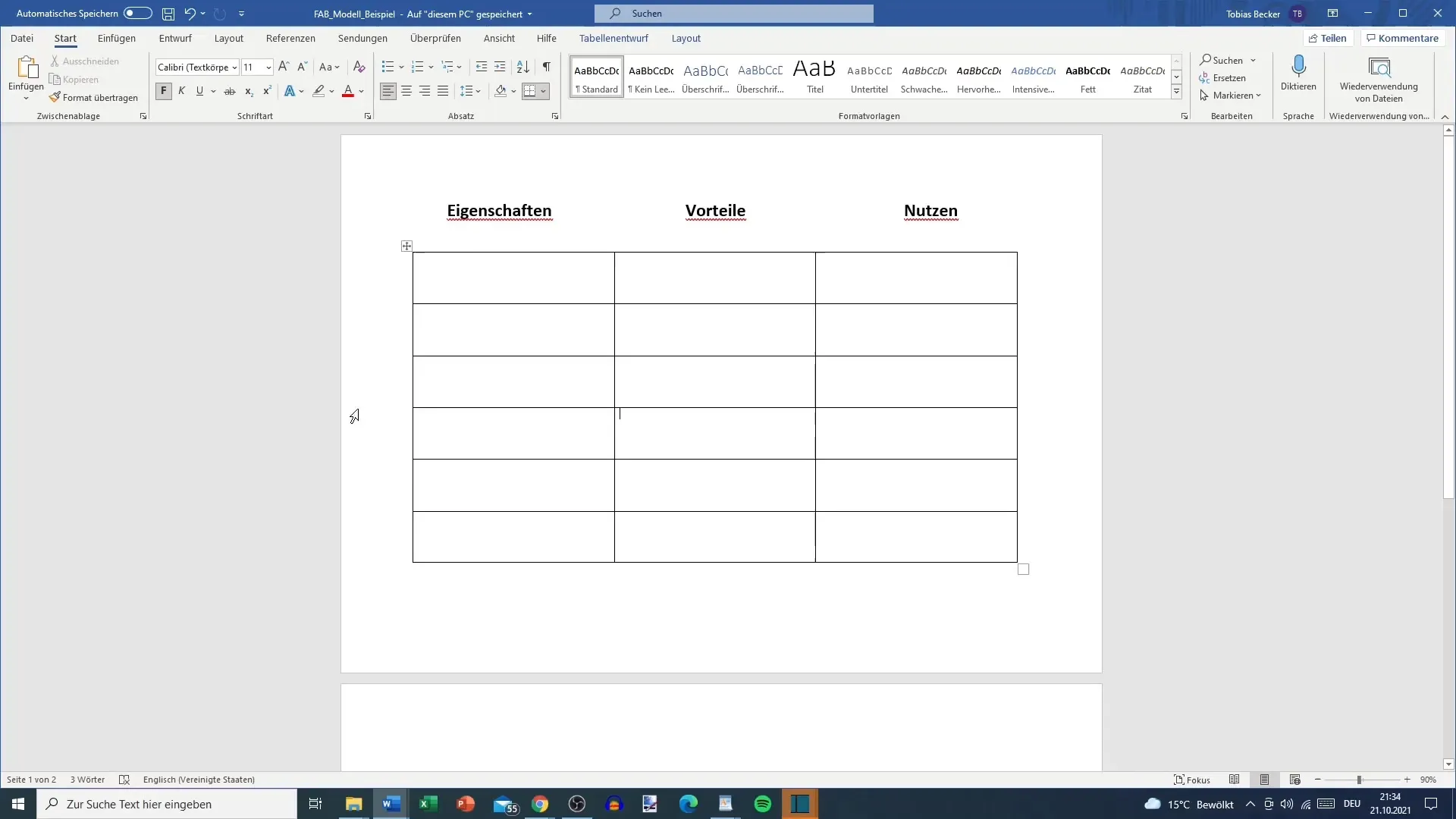The right approach to your target audience is crucial when it comes to successfully marketing products and services. One method that can be very helpful to you is the FAB model. In this tutorial, we will walk you through the process step by step, using a concrete example – the iPhone. You will learn how to clearly and concisely highlight the features, advantages, and benefits of a product.
Key Insights
- The FAB model consists of three components: features, advantages, and benefits.
- To create a strong product description, you should note down at least five to ten features.
- For each feature, two benefits should be listed, which typically lead to a benefit.
Step 1: Collecting Features
We start with the first step: the features of the product. In our example, we are looking at the iPhone. You can create a simple table to organize the information. Begin by writing down the key features of your product.

For the iPhone, for example, features such as camera quality, battery life, tempered glass, and waterproofing could be relevant. The camera would be a strong feature, as it offers very good quality and can take 48-megapixel images and record videos in full HD. Remember that these technical details are important to give potential customers a first impression of the product.
It is helpful to refer to the latest models and their specifications – even if you are not a tech expert. Note down all relevant features that you consider important.
You have now documented the features of the iPhone. Note down at least five such points. A good product description is based on a solid collection of features.
Step 2: Defining Benefits
After collecting the features, the next step is to define the benefits of each point. Consider what the respective features mean to the customer and what benefits they offer.
Let's take camera quality as an example. One benefit could be that high-resolution photos and videos are enabled, allowing users to capture their memories in ideal quality. Think about what the customer can specifically benefit from this feature.
Write down two benefits for each listed feature. If you add additional features, make sure to clearly formulate the benefits for those as well. This creates a direct connection between the product features and the needs of your customers.
Step 3: Formulating Benefits
The final step is formulating the customer benefits. These should be derived from the previously defined benefits. You must explain concretely how the customer directly benefits from the advantages of the features.
In the case of the camera, you could say that the user can simply take high-quality photos that can be easily shared on social media, resulting in more likes and followers. This creates an emotional connection to the product and shows why it is important to the customer.
Precisely summarize each benefit and ensure that it is clearly and understandably formulated. This way, the customer is able to identify with the product and see the value it offers.
Summary
The FAB model is a valuable methodology for effectively describing products. By clearly differentiating between features, advantages, and benefits, you can create a convincing product presentation that appeals to potential customers. Remember to gather a variety of features to have enough material for the benefits and the advantages. With this approach, you are well equipped to present your products in the best light.
Frequently Asked Questions
What are the components of the FAB model?The FAB model consists of the three components: features, advantages, and benefits.
How many features should I list?It is advisable to note between five and ten features.
How many benefits should I list for each feature?Two benefits per feature are ideal.
Why is the benefit so important?The benefit shows the customer how the product specifically helps them and what benefits they derive from it.
Can I use the FAB model for every product?Yes, the FAB model can be applied to a variety of products and services.


